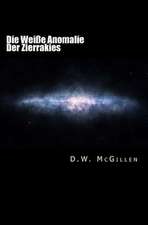Universe Rotation: Pro & Contra
Editat de Myrzakulov Ratbayen Limba Engleză Hardback – 2017
Preț: 1100.01 lei
Preț vechi: 1279.08 lei
-14% Nou
Puncte Express: 1650
Preț estimativ în valută:
210.48€ • 219.78$ • 173.81£
210.48€ • 219.78$ • 173.81£
Carte disponibilă
Livrare economică 25 martie-08 aprilie
Preluare comenzi: 021 569.72.76
Specificații
ISBN-13: 9781536105087
ISBN-10: 1536105082
Pagini: 154
Dimensiuni: 155 x 230 x 23 mm
Greutate: 0.46 kg
Editura: Nova Science Publishers Inc
Colecția Nova Science Publishers Inc
ISBN-10: 1536105082
Pagini: 154
Dimensiuni: 155 x 230 x 23 mm
Greutate: 0.46 kg
Editura: Nova Science Publishers Inc
Colecția Nova Science Publishers Inc
Cuprins
Preface; Introduction; Observational Effects of Global & Local Rotation; The Space Orientation of Radio Sources as the Indicator to its Anisotropy I: The Catalog; The Space Orientation of Radio Sources as the Indicator to its Anisotropy II: The Axis Distribution Function; On the Universe Rotation & Cosmological Principle; Universe Rotation & its Some Cosmological Consequences; Preferred Axis in the CMB Parity Asymmetry; Cosmological Models with Rotating Dark Energy; Rotating Cosmologies in Poincare Gauge Gravity; Conclusion; Index.












